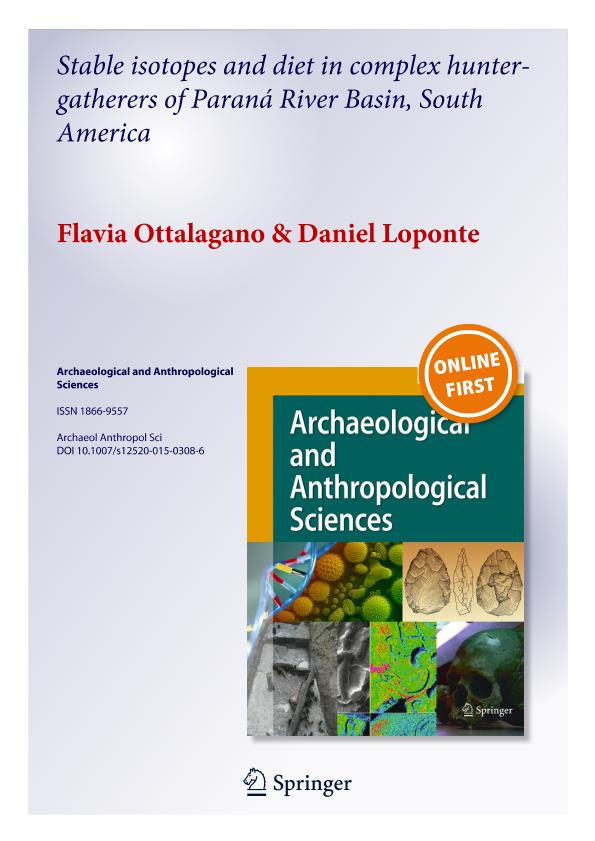Artículo
Stable isotopes and diet in complex hunter-gatherers of Paraná River Basin, South America
Fecha de publicación:
08/2017
Editorial:
Springer
Revista:
Archaeological and Anthropological Sciences
ISSN:
1866-9557
e-ISSN:
1866-9565
Idioma:
Inglés
Tipo de recurso:
Artículo publicado
Clasificación temática:
Resumen
This paper discusses isotopic analyses carried out on human bone samples corresponding to complex hunter-gatherers from the Paraná River basin in northeastern Argentina. Based on the δ15N and δ13C values obtained, the dietary patterns of 23 individuals recovered from pre-Hispanic archaeological sites of the Late Holocene are characterized. These sites are associated with the archaeological unit generically called Goya-Malabrigo, which is identified in South America over the entire middle basin of the Paraná River and on a part of the lower river. The values obtained show diets based on depleted δ13C proteins linked to the C3 photosynthetic pathway, which is in turn consistent with the isotopic values detected in the main food sources of these human groups: freshwater fishes and continental mammals. The δ15N values and the results of a multivariate model also indicate a low consumption of plant foods. Although archaeobotanical information from the area has reported maize and other cultigens, the diet of the individuals studied was based on animal proteins, especially on freshwater fish. Moreover, the intake of maize was not isotopically detectable in the human bones analyzed.
Archivos asociados
Licencia
Identificadores
Colecciones
Articulos(SEDE CENTRAL)
Articulos de SEDE CENTRAL
Articulos de SEDE CENTRAL
Citación
Ottalagano, Flavia Vanina; Loponte, Daniel Marcelo; Stable isotopes and diet in complex hunter-gatherers of Paraná River Basin, South America; Springer; Archaeological and Anthropological Sciences; 9; 5; 8-2017; 865-877
Compartir
Altmétricas




